butler
house linen care service
care tips for your hosehold linen: simple, natural and effective tips
universal washing symbols
The table below defines the symbols you find on the labels of each item. Please read this label carefully before washing.
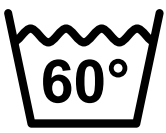 Normal wash, temperature 60°C
Normal wash, temperature 60°C
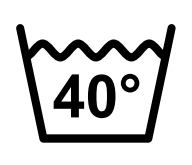 Delicate textile, temperature 40°C
Delicate textile, temperature 40°C
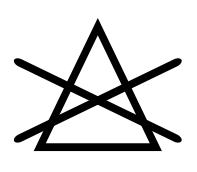 Bleach prohibited if the triangle is crossed by an X; allowed if the triangle is not crossed
Bleach prohibited if the triangle is crossed by an X; allowed if the triangle is not crossed
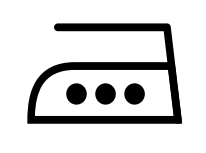 Iron to 210°C (three points), 160°C (two points) and 120°C (one point)
Iron to 210°C (three points), 160°C (two points) and 120°C (one point)
 Dry cleaning
Dry cleaning
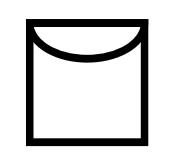 Can be dried on a wire
Can be dried on a wire
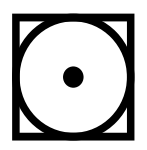 Indicates that the item can be dried in a dryer at medium temperature
Indicates that the item can be dried in a dryer at medium temperature
All our items come with cleaning instructions and carry a label with universal washing symbols. This brochure is intended to give you more advice on the care of your laundry and stain removal.
Your linen is part of your heritage. We want you to enjoy its comfort and pleasure every day for a long time.
prior advice
Machine washing is recommended for all of our items, except those marked “dry cleaning” (quilted or quilted bed covers and wool and mohair blankets).
We advise you to follow the following rules:
Pre-wash all your laundry before use;
Wash the household linen separately, especially do not mix it with polyester-based items. Polyester forms soft toys that cling to natural fibers, which alter the softness and flexibility of textiles. Also beware of clothes with buttons and zippers that may damage the more delicate laundry during washing.
Detergents containing bleaching agents should not be used for coloured textiles as they may tarnish their shine or alter their colouring.
To ensure the longevity of your linens, follow the French tradition. Turn your sheets regularly: put an ornament in your wardrobe, a second on your bed and a third in your machine, making sure to use them with the same frequency.
Warning: some cosmetics or hair products containing oxidizing agents (such as anti-acneic lotions) can discolour sheets, especially those of blue color. If you use this type of product, protect your pillow with a pillowcase or white towel.
Narrowing
All natural fiber textiles have a slight shrinkage of 4-8% depending on the fiber. The size of our articles takes into account this possible shrinkage. However, items washed and dried at high temperatures may shrink further.
bed linen maintenance
1) Separate light and dark colors. Avoid overloading your machine to prevent breakage of long fibers such as Egyptian cotton. Whether made of cotton, linen or cotton and linen blend, bed linen should be washed in warm water with a detergent for delicate textiles, and rinsed with cold water. If a pre-wash is to be done, it must be done in cold water.
2) Fill your machine and run it to fill it with water before putting the detergent.
3) Unless your laundry is very dirty, use only half the amount of detergent recommended commercially; this will prevent the fibers from damaging and wash your laundry just as it should.
4) Quickly remove the laundry from your machine and shake it before drying to prevent it from creasing.
5) Shaking the flax still wet before drying (at low temperature) will reduce wrinkling and drying time.
bath linen maintenance
Terrycloth towels: be sure to wash them before use to make them soft and absorbent, knowing that it will take several washes before your terry towels reach their absorption capacity, flexibility and maximum volume. As you wash your sponge towels become softer and softer. For coloured linen do not use laundry detergent containing bleaching agents: they may tarnish their shine or change the colours.
The use of a dryer at moderate temperature, slightly humid is particularly suitable for terry laundry, it gives it all its swelling and flexibility, and preserves its hydrophilicity. On the other hand, we do not recommend the use of softeners that reduce the absorbency of cottons.
table linen maintenance
Jacquard woven table linen requires little maintenance. It undergoes a preliminary treatment intended to facilitate its maintenance and supports bleach without damage to the colors. However, we do not recommend dry cleaning. Indeed, washing “relaxes” the fibers and highlights the very elaborate patterns of Jacquard.
Prewash is particularly important here because it protects the laundry from future stains. Note: excessive use of bleach may damage natural fibers.
It is best to wash your laundry in warm water with a laundry detergent for delicate textiles and rinse it with cold water. You can use bleach to brighten up your laundry. On the other hand, we do not recommend softeners because they reduce the absorbency of textiles and can give off an unpleasant smell.
Quickly remove the laundry from your machine and shake it before drying to prevent it from creasing.
A word about the rags. As beautiful as they are, our tea towels are made to serve intensively: in the kitchen to dry dishes or glassware, but also to wipe stains. So you can use bleach to maintain their shine.
laundry drying
Drying the laundry on a clothesline is ideal to have a fresh and little wrinkled linen. However, a good programming of your dryer will give you satisfactory results and will leave your laundry relatively flexible and smooth.
Do not dry your laundry by choosing a too high drying temperature. Set your dryer to use the cooling cycle at the end, which helps to smooth the laundry. Most dryers have a cycle that only sends air without heat. This is also a good way to dry your laundry.
Quickly remove your laundry from your machine to prevent it from collapsing. Smooth it by flattening parts, including the edges of pillowcases and sheets and the ends of tablecloths and towels. Then fold it carefully.
ironing
Washed and dried properly, your laundry will not wrinkle. Nevertheless, fine and delicate textiles made of natural fibers tend to wrinkle, especially when they are new. When used, they become softer and eventually form fewer folds. For bed linen and towels, a good steam iron facilitates ironing.
For embroidered linen, we advise you to use a 100% cotton fleece without canvas so that your embroidery is embedded in the fleece. Thus maintained, your laundry will be easier to iron.
Bed linen
Iron your bed linen when it is still wet. If the linen is embroidered, iron the embroidery a first time on the place then iron it on the back to make it stand out, it will protect the quality of the embroidery. Refer to care labels with universal codes for proper use of your iron temperature. (Universal washing symbols are shown at the beginning of the document).
Table linen
The table linen must be ironed still wet. The ironing of the woven Jacquard linen emphasizes all the relief of this technique. Iron the embroidered linen on the spot to iron the embroidery then on the reverse to bring out the embroidery.
linen storage: our fabric packaging are storage protectors
If you plan to store your laundry, we advise you to iron it beforehand.
Store laundry flat. If your shelves are made of wood, cover them with white tissue paper or fabric. Some woods like cedar contain oil and may damage your laundry.
Make sure your laundry is not exposed to too much light directly to prevent it from fading.
Do not leave laundry on a table where it may be exposed to sunlight for an extended period of time.
Do not store it wet, it could create stains.
Do not store in plastic bags for breathing.
The fabric packaging provided on delivery allows you to store your sets in your cabinets and note on the attached labels the linen that is inside.
down care
Always protect your duvets with covers to keep them clean. With your down pillows, use pillowcases and wash them regularly.
Shake your duvets and pillows daily to give them volume and ensure an even distribution of down.
Soiled or stained duvets and pillows can be cleaned with a damp cloth and soap.
You can also wash your pillows and duvets. Your duvets and pillows will again be well inflated and will regain their shine.
You can wash them in warm water in a large capacity machine with front loading (like those used by professionals), taking care to choose a laundry for delicate textiles. Avoid machines with top loading, which may damage the fragile cotton envelope of your items. A small shrinkage and slight wrinkling may result from washing. But they are invisible when the duvet is put back in its cover.
Down duvets and pillows dry in the sun. Lay them on a sheet in the grass or on a terrace and shake them vigorously from time to time while drying. You can also dry them in the dryer at medium temperature. In this case, take them out every hour to shake them and give them volume. Put some tennis balls in your machine for easy drying. Make sure your duvets and pillows are completely dry before putting them back on a bed or in a wardrobe. Always store them in cotton bags and not plastic.
stain removal
Fruits and berries: if the stain is still wet, sprinkle it with salt and mild liquid soap. Leave on for a few hours and rinse thoroughly.
Blood: Clean blood stains immediately. Rinse thoroughly with cold water (never hot water, which will permanently fix the stain). Then soak in cold water with two cups of salt for 24 hours and wash as usual.
Butter and margarine: put a tablespoon of laundry in warm water. Apply to the stain and dab. Repeat several times if necessary. You can also mix with a third vinegar and two thirds water, soak the stain and then absorb with a cloth. Then wash as usual.
Candle on table linen: carefully remove the wax with your nail. If it is still soft, harden it with an ice cube. Place the stained item between two pieces of wrapping paper and press with a hot iron. The remaining wax will be absorbed by the paper. If the wax was colored, use diluted bleach.
Coffee or tea: apply a borax solution (1 volume of borax for 6 volumes of water) directly on the stain. Then wash with warm soapy water.
Grease: grease stains do not wait. Sprinkle the stain with baking soda or Sommières soil and leave for a few hours until the powder thickens. Scrape and repeat. Brush to remove the powder and wash as usual.
Grass: (on table linen). Mix one-third vinegar and two-thirds water. Apply to stain and dab. Then wash with warm soapy water.
Lipstick: scratch the stain with a knife with a sharp blade. Use an aerosol can to stain textiles before washing and rub with a clean white towel. Then wash as usual.
Mold: Apply white vinegar or lemon juice to stop mold. Let dry in the sun for a few hours. Wash as usual, but separately.
Russet stains: treat in the same way as mold, but drying in the sun is not necessary.
Wine: white wine stains are easily removed with normal washing. Red wine stains can be treated in two ways:
- Rub the stain with white wine, let it penetrate
Soak the stain with sparkling water until it disappears.

